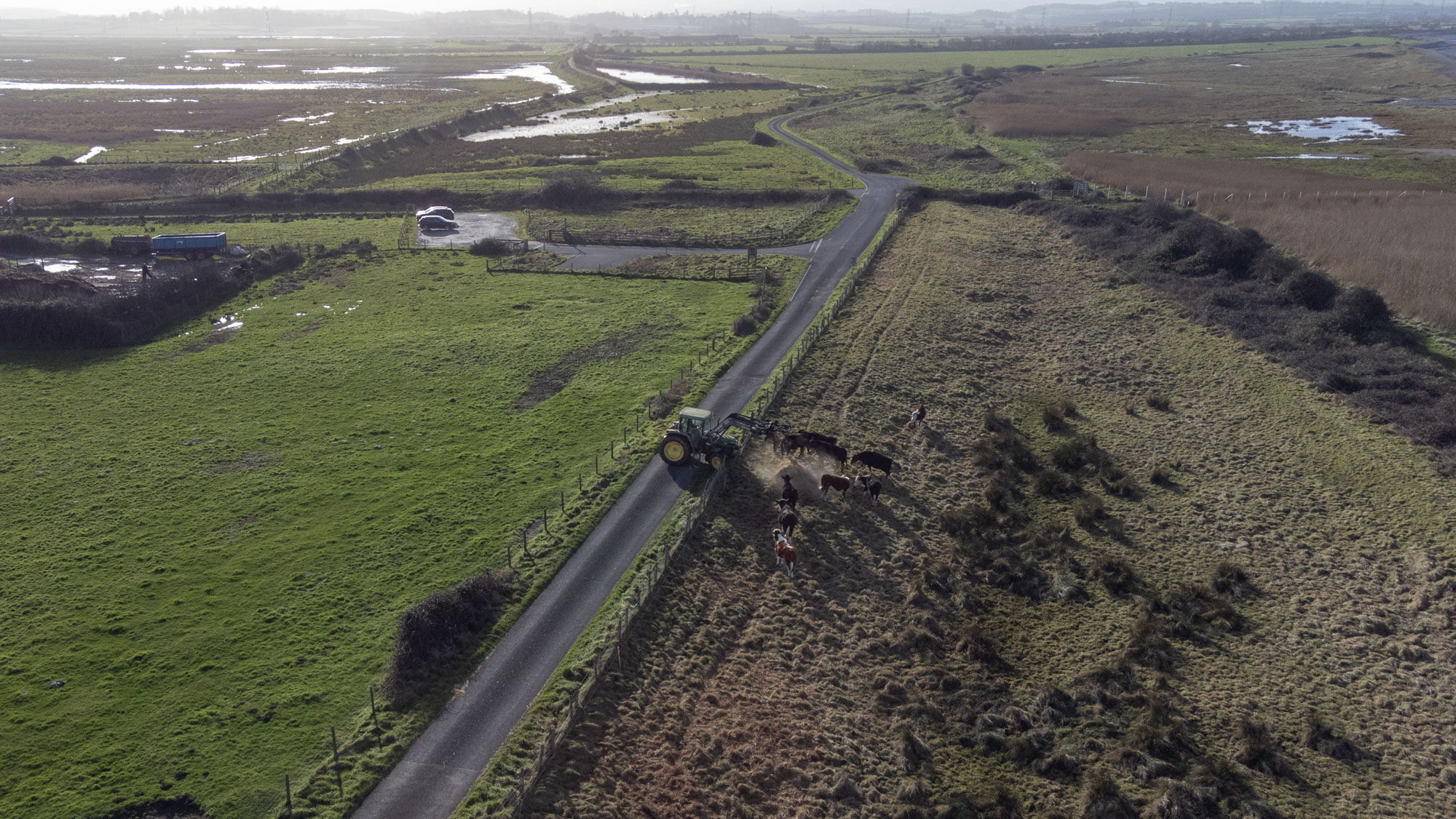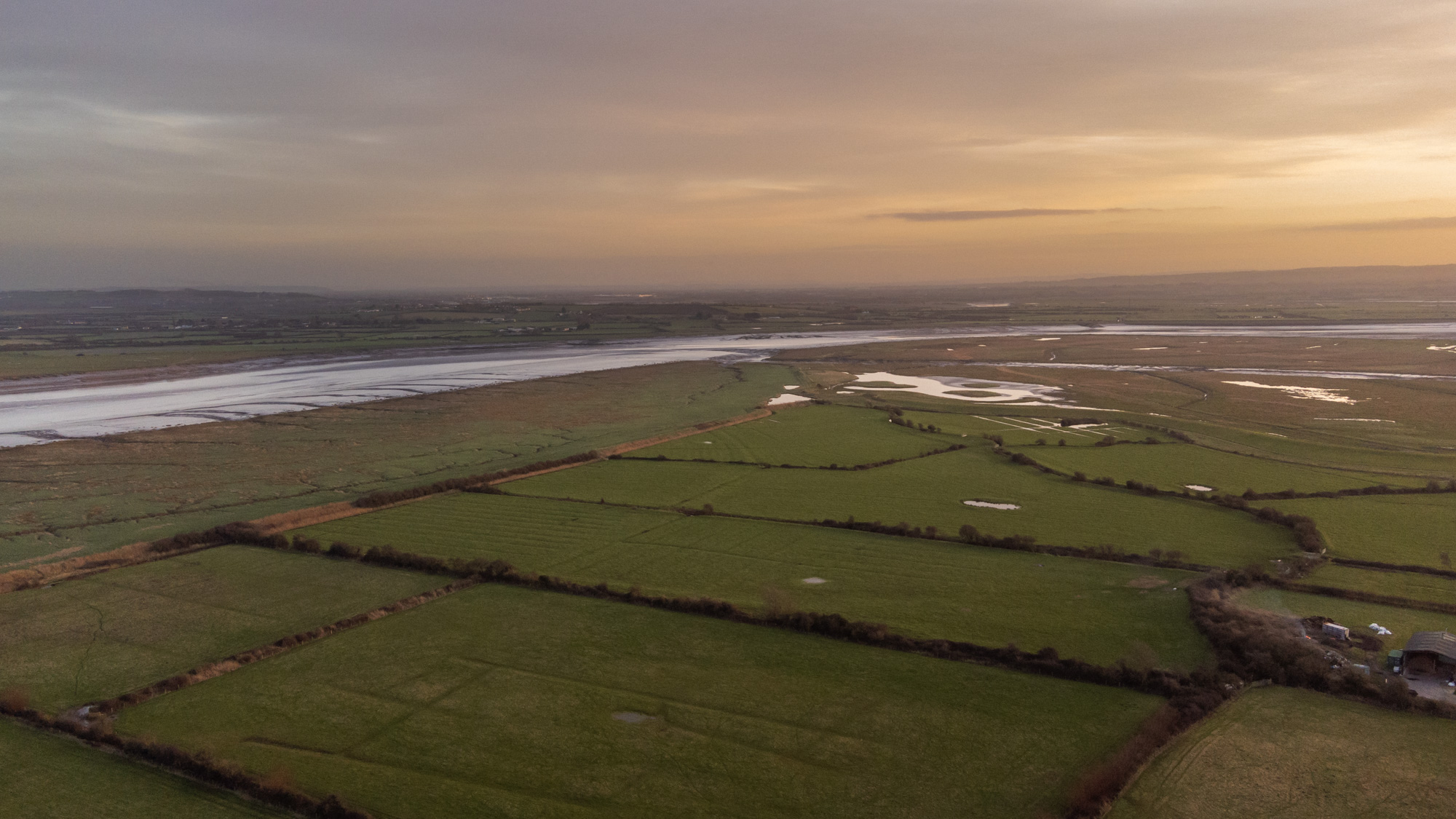
Carbon & Cattle
Given the negative press surrounding cattle and their environmental impact, it may seem ironic that we use them to create a better ecosystem. However, careful grazing and management of large herbivores support a healthy, diverse population of plants and wildlife. All of our cattle are reared on the Steart peninsula, minimising travel. They can walk directly from the barn where they were born to the marshes where they graze.
Grazing
Well-managed grazing and trampling of grasses promote new growth by stimulating plants when they are bitten. Growing plants absorb CO2 through photosynthesis. Trampled grasses contribute to organic matter in the soil, which stores carbon deep within the marshes.
Extended rest periods allow grasses and plants to flower and establish deep root systems, which absorb and retain more water. This reduces flooding by minimising surface runoff and helps native plants establish themselves against invasive species. Many of these wetland plants are nutrient-rich and beneficial for both cattle and humans. For example, sea aster is packed with vitamins and minerals that promote overall cattle health, from bone strength and muscle development to digestion. A healthy gut in ruminants ensures they absorb the maximum nutritional benefit from their diet, producing exceptional-quality beef. A well-functioning rumen also emits less methane, reducing greenhouse gases.

Thriving Grasslands
Large herbivores like cattle are essential for thriving grassland habitats. A healthy plant ecosystem supports insects, which in turn provide food for birds. Small mammals can burrow safely, avoiding predators like kestrels and hawks. Visit the WWT website to explore the incredible wildlife found in and around the marshes.

Look After Our Environment
When we look after our environment, it looks after us. Wetlands trap carbon, create ideal fish breeding grounds, and support broader ecosystems. Carbon stored in roots allows the soil to retain water more efficiently. This reduces flooding in wet conditions and ensures moisture retention in dry periods, creating a more drought-resistant landscape.
We encourage everyone to enjoy this landscape. Spending time in nature has numerous physical, psychological, and cognitive benefits. A natural environment is essential for overall well-being.
Perhaps that’s why we and our cattle are so happy, healthy, and content!

